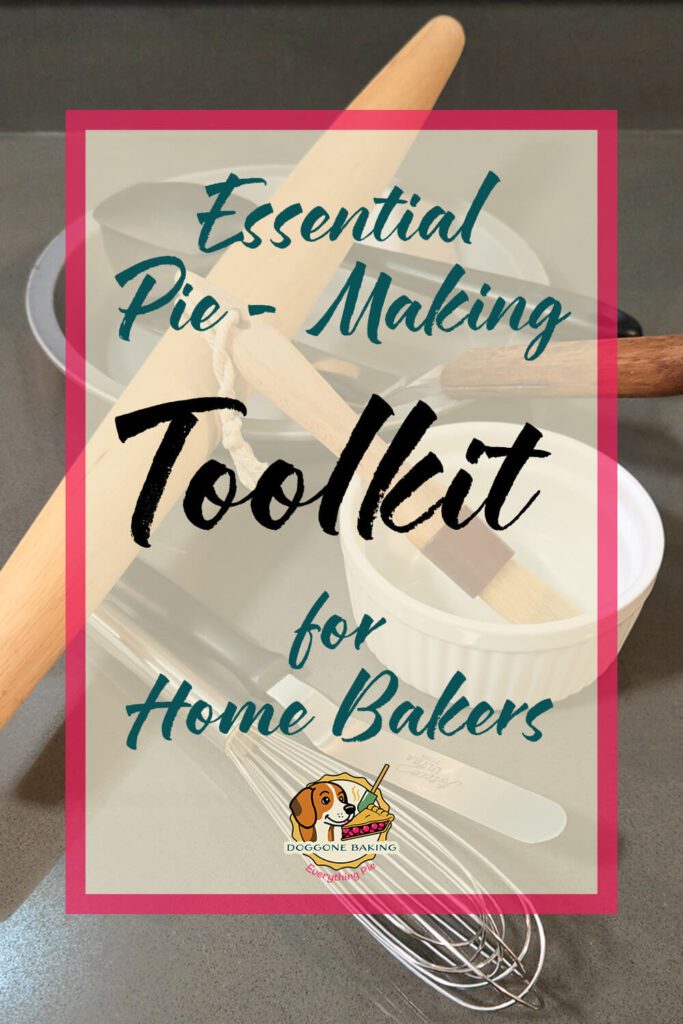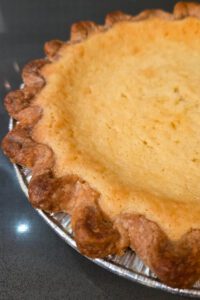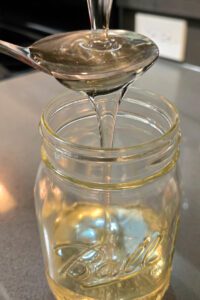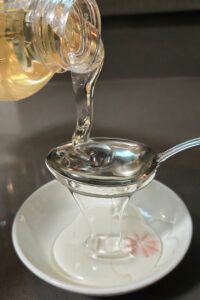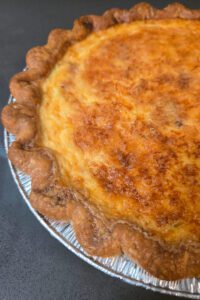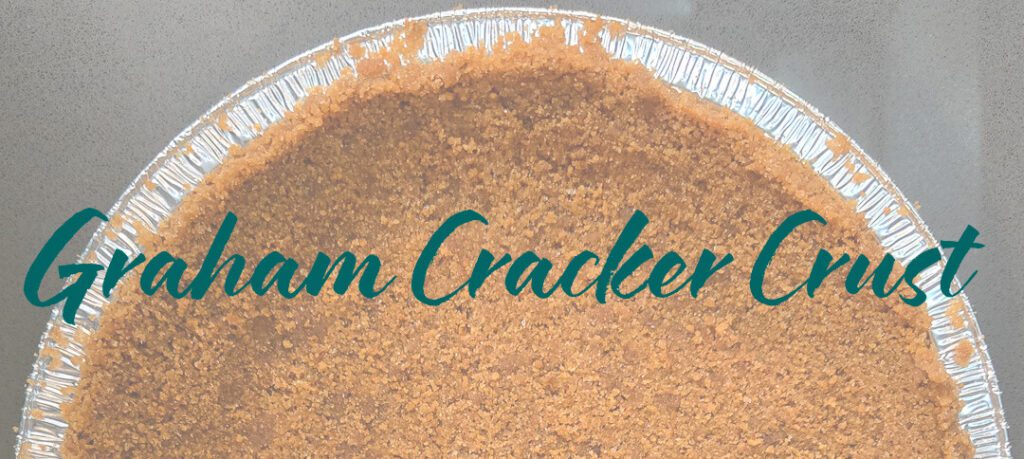
Best Graham Cracker Crust Recipe: A Complete Guide
Graham cracker crusts are probably the most popular pie crust alternative to classic buttery pastry crusts. They are simple, quick, and beginner-friendly, making them the perfect starting point for new bakers. There’s no dough to roll out, no need to shape edges, and no blind baking required. You can even mix the crust with just a fork! This versatile base pairs especially well with creamy or custard-style pies such as key lime pie, chocolate cream pie, no-bake peanut butter pie, and even modern variations of pumpkin pie.
Table of Contents
The History of Graham Cracker Crusts
Monroe Boston Strause, sometimes called “The Pie King of Los Angeles,” is often credited with being the inventor of the graham cracker crust. He even says so himself in his 1939 book Pie Marches On, where he claims that he created the crust to prevent soggy bottoms on custard and cream pies. Strause also claimed to be the creator of the hugely popular category of chiffon pies and even filed a patent for meringue pie in 1949. (He was not the inventor of meringue pies, meringue pies existed long before he was born including the classic lemon meringue pie).
The graham cracker crust Strause describes in Pie Marches On, however, is very different from what we think of today. His version, which he called a “rolled-in graham cracker crust,” involved taking a pastry dough and rolling it over crushed graham crackers so the crumbs stuck to the dough. For custard pies, he coated one side; for cream pies, he coated both. The result was still shaped and handled like a traditional pastry crust, just with graham crumbs worked into the dough.

When we think of graham cracker crust today, rather than a rolled crust, we think of what bakers frequently call a “crumb crust.” The first published recipe I could find for a crumb crust resembling today’s style appeared in the Los Angeles Times on April 13, 1931, in a recipe for French Apple Pie. The first published example I found was in a cookbook by Knox Gelatine in 1933. Considering Strause ran a bakery in Los Angeles during the 1920s, it’s possible he did create crumb-style crusts in that period, even if his early versions looked a bit different.
Crumb crusts grew steadily more popular through the 1930s and 1940s because they were quicker and easier than pastry. At the same time, refrigerators were becoming common in American households, and icebox pies (which often use crumb crusts) took off in popularity. The trend peaked in the mid-1950s with the launch of Py-O-My boxed pie mixes. Advertised nationwide, they promised “the complete graham cracker crust and chiffon filling in one package,” and came in flavors like chocolate, lemon, strawberry, and butterscotch.
Note: You can read all about Monroe Boston Strause here.
Best Pies for Graham Cracker Crusts
Graham cracker crusts are used in all kinds of pies, showing up in everything from classic custard pies to modern no-bake favorites. They pair especially well with smooth, creamy fillings where the crisp, sweet crumb adds balance. Fruit pies, on the other hand, usually aren’t a good fit since their long bake times can cause the crust to burn.
Below is a list of pies most often made with a graham cracker crust, though plenty of other recipes can be adapted to use one as well. Have a favorite variation we missed? Share it with us or tag @doggone_baking on Instagram — we’d love to see your creations.
- Key Lime Pie: One of the most-searched pie recipes year-round, key lime pie is classically served in a graham cracker crust. Its signature filling is a smooth custard made with key lime juice, egg yolks, and sweetened condensed milk, creating the perfect balance of tart and sweet.
- Millionaire Pie: A fluffy, no-bake icebox pie from the mid-century American South, millionaire pie has a light filling that typically includes whipped cream, condensed milk, crushed pineapple, chopped maraschino cherries, pecans, and shredded coconut. Served in a graham cracker crust, it’s a classic retro dessert that retains a following today.
- Cheesecake Pies: A graham cracker crust is the classic choice for cheesecake pies, which have all the best parts of a traditional cheesecake without the springform pan or water bath. These pies are a less-fussy alternative but still deliver that rich, creamy cheesecake filling in a perfectly crisp crust.
- Icebox Pies: Icebox pies became especially popular in the 1950s as refrigeration spread to more households. These no-bake desserts often feature a graham cracker crust and fillings flavored with lemon, strawberry, or chocolate. Their light texture and simple preparation made them an instant favorite.
- S’mores Pie: Since graham crackers are essential to classic s’mores, it’s no surprise that s’mores pie begins with a graham cracker crust. The pie layers a creamy chocolate filling with a toasted marshmallow topping, echoing the campfire favorite in a rich, sliceable dessert.
- Ice Cream Pie: Ice cream pies are almost always served in crumb crusts, with graham cracker crusts being the most popular choice. While Oreo and Biscoff crusts are also common, the graham crust provides a neutral sweetness that complements nearly any flavor of ice cream.
- Banana Pudding Pie: Inspired by classic Southern banana pudding, this pie blends layers of bananas, vanilla wafer cookies, and creamy instant pudding. While some recipes stick with pastry, many versions today are served in a graham cracker crust, which pairs beautifully with the pudding-style filling.
- Jello Pie: Jell-O pies are often made in graham cracker crusts, though some bakers use pastry crusts. The strawberry Jell-O pie is by far the most popular version, with its vibrant color, refreshing flavor, and ease of preparation.
- Pumpkin Pie Variations: Traditional pumpkin pie is usually baked in a pastry crust, but many modern recipes swap in graham cracker crust for added sweetness and texture. Pumpkin cheesecake pie is another popular variation, combining two classics in a graham cracker base.
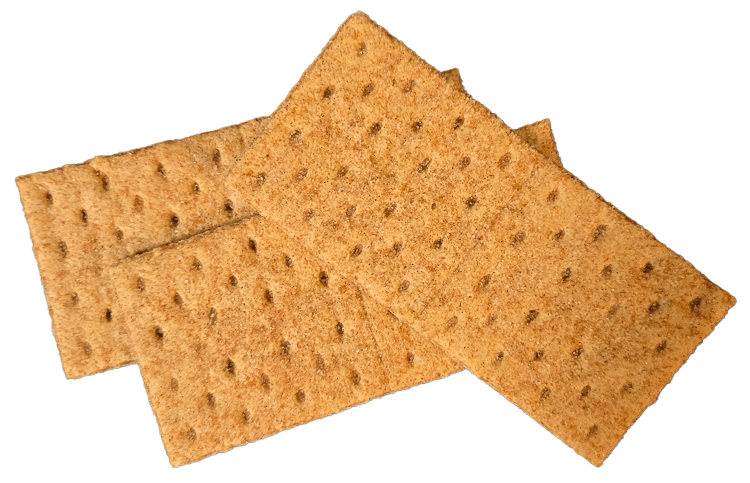
The Best Graham Crackers for Pie Crust
The foundation of any good graham cracker crust is, of course, the graham crackers themselves. Whether you’re aiming for a classic flavor or experimenting with new twists, the crackers you choose make a noticeable difference in both taste and texture. Home bakers have two main options: you can make graham crackers completely from scratch, or buy ready-made graham crackers from the store. Both methods can yield a delicious crust, and the choice usually comes down to how much time you want to spend and whether you want to add an experimental twist or homemade touch to the final product.
- Homemade Graham Crackers for Pie Crust:
If you have the time, making graham crackers from scratch can take your crust to the next level. Homemade crackers let you control the recipe so the flavor is exactly how you like it. You can also make your own vegan or gluten-free crackers if you’re having difficulty finding them in stores. The result is a more personalized crust with a fresh-baked taste.
- Best Store-Bought Graham Crackers for Pie Crust:
For convenience, store-bought graham crackers work great and are the go-to choice for most bakers. Honey Maid is the classic option and they even sell pre-crushed graham cracker crumbs in some stores, which saves time if you don’t have a food processor. I prefer Trader Joe’s graham crackers thanks to their sturdy texture and flavor. Both brands deliver reliable, consistent results and make an excellent base for pie crust.
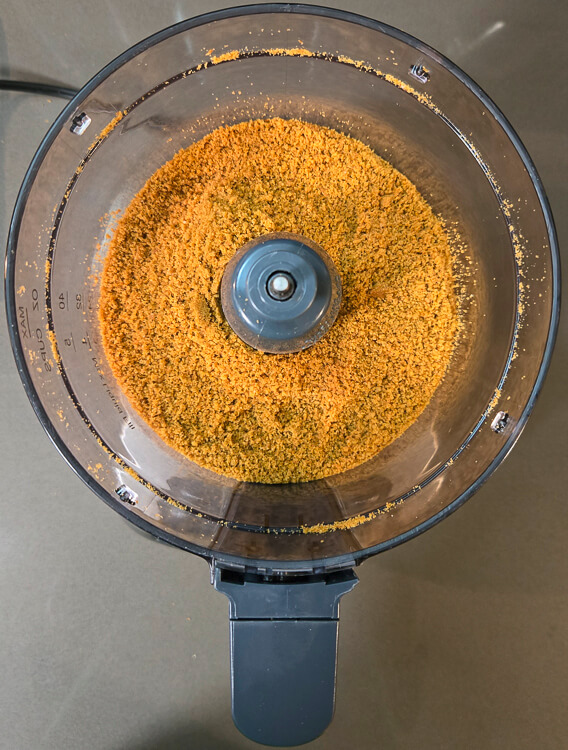
How to Make Graham Cracker Crumbs for Pie Crust
The quickest and most efficient way to make graham cracker crumbs is with a food processor. Break the crackers into a few pieces by hand, then pulse them in batches until they’re finely ground. This method gives you even crumbs with minimal effort.
If you don’t own a food processor, there are still easy alternatives. Many brands, including Honey Maid, sell pre-crushed graham cracker crumbs, and you can also find bulk packages of crumbs online from retailers like Amazon. Buying them ready to use saves time and eliminates an extra step in the baking process.
If you don’t have a food processor and also can’t find pre-crushed crumbs, you can crush the crackers with a rolling pin. Place them in a large zip-top bag, leave a small opening so air can escape, and roll over the crackers until they’re ground to the texture you want. For this technique, a traditional rolling pin with handles works best since they are heavy, making it easier to break the crackers down into fine crumbs.
If you plan on making pies regularly and don’t already have one, investing in a food processor is well worth it. It saves time, produces perfectly even crumbs, and can be used for many other baking tasks. I recommend the Cuisinart 8-cup food processor, which is what I use at home. If you’re looking for a more budget-friendly option, the 4-cup version is a reliable entry-level choice that still gets the job done.
How to Make Vegan and Gluten-Free Graham Cracker Crusts
Making a graham cracker crust vegan or gluten-free is surprisingly simple, especially compared to adapting a traditional flaky pastry crust. Since crumb crusts rely only on crushed crackers, a bit of sugar, and an oil, swapping in gluten-free or vegan alternatives is straightforward.
- Gluten-Free: To make a gluten-free graham cracker crust, just swap regular graham crackers for your favorite gluten-free ones for an easy one-to-one substitution.
- Vegan: For a vegan graham cracker crust, start with graham crackers that don’t contain honey, such as Nabisco’s original variety or other plant-based brands. Replace the melted butter with either melted coconut oil or vegan butter.
How to Make a Graham Cracker Crust
Ingredients
- 1½ cups Graham Cracker Crumbs (~210g)
- ¼ cup Unsalted Butter, melted (2oz)
- ¼ cup Granulated Sugar (50g)
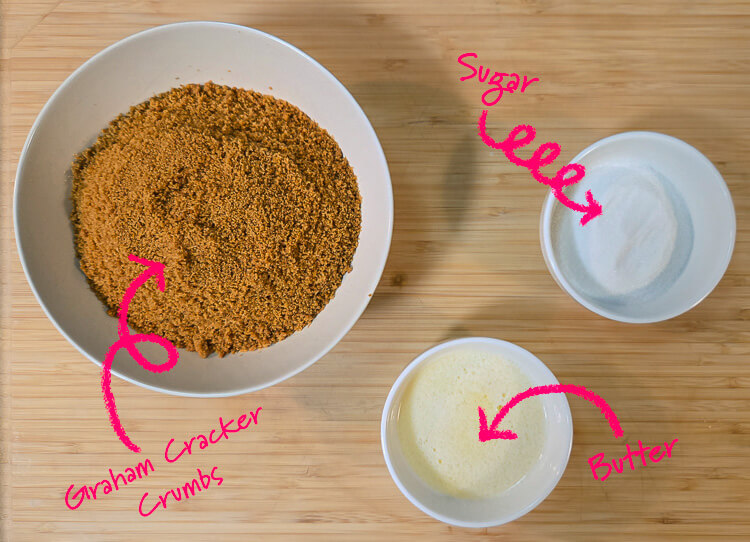
1.
Start by grinding your graham crackers into fine crumbs. The easiest method is to use a food processor, working in small batches so you don’t overfill the bowl. You’ll need about 1½ cups of crumbs in total. If you don’t have a food processor, place the crackers in a large zip-top bag, leave a small opening for air to escape, and crush them evenly with a rolling pin. You can also save time by buying pre-crushed graham cracker crumbs from the store.

2.
In a medium mixing bowl, combine the graham cracker crumbs with ¼ cup of melted butter and ¼ cup of granulated sugar. Stir with a fork until the crumbs are evenly coated and resemble damp sand.
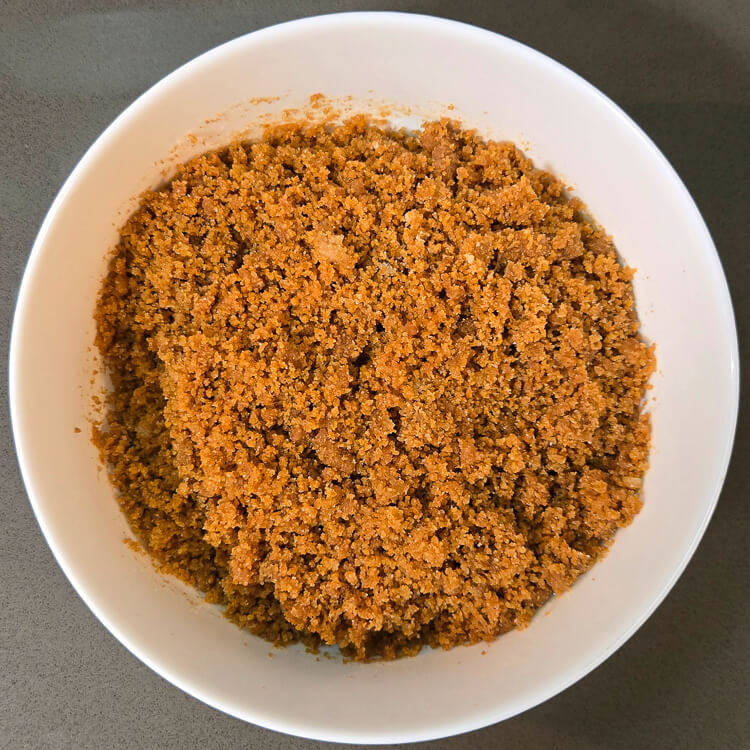
3.
Press the mixture firmly into the bottom and up the sides of a 9-inch pie pan. The easiest method is to start by pressing the crumbs into the center, then working outward until they climb up the edges of the pan. A flat-bottomed measuring cup or glass can help pack the crumbs tightly and evenly.
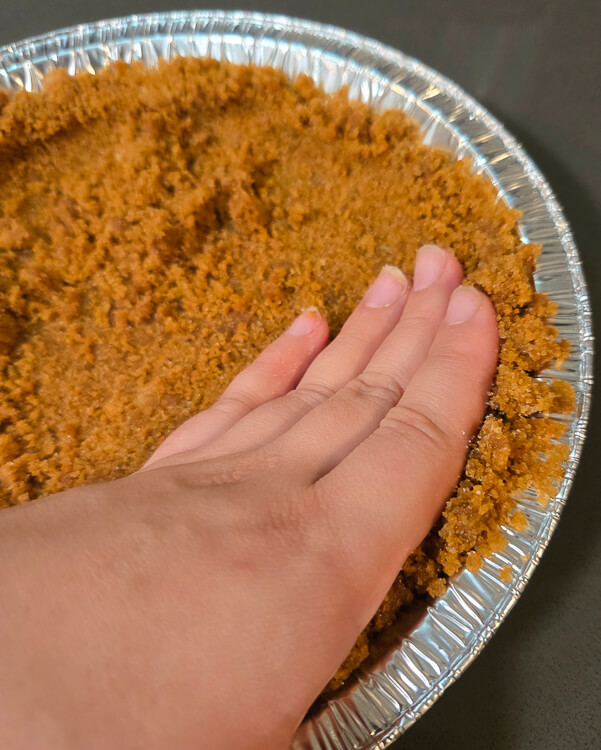
4.
If your filling will be no-bake, you can choose to pre-bake the crust for 5–7 minutes at 350°F. This step is optional but helps give the crust extra crispness. For baked fillings, the crust will bake as the pie bakes, so pre-baking isn’t necessary.
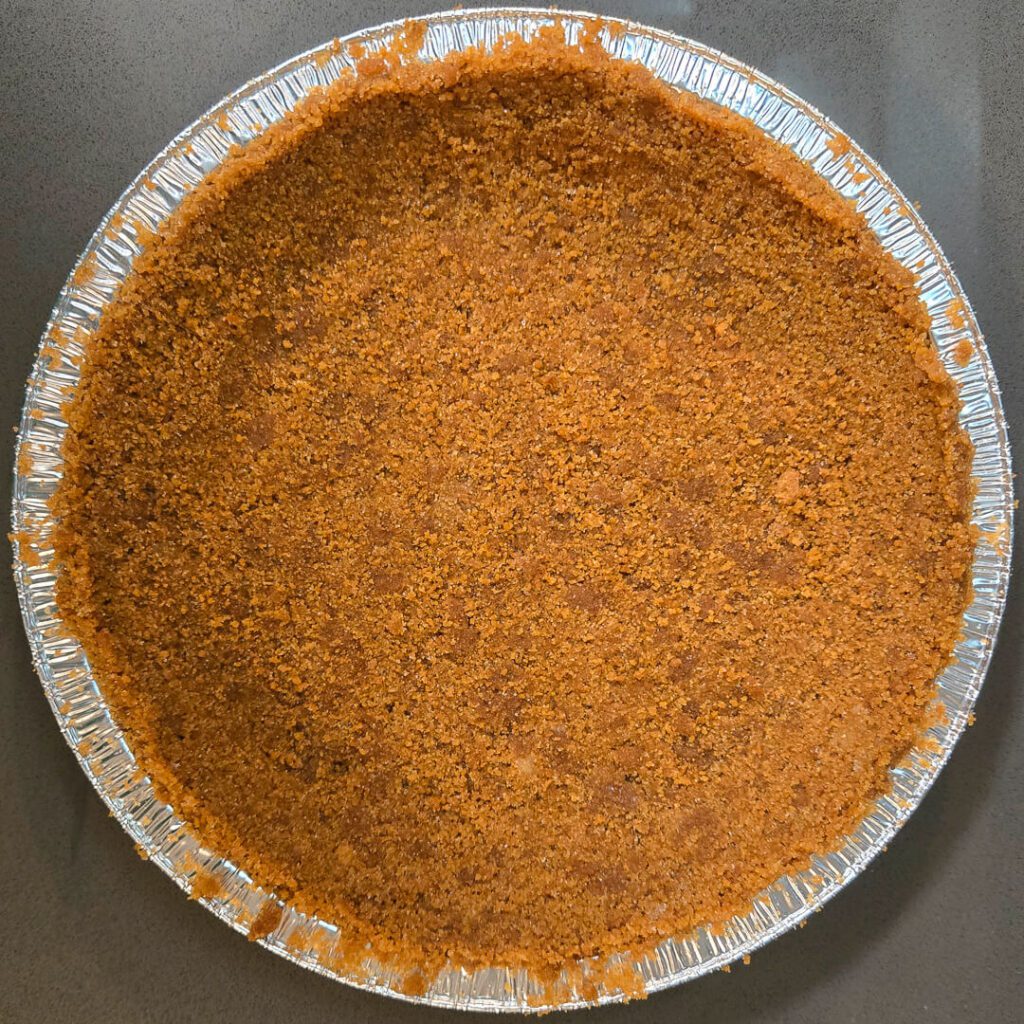
What is a Crumb Crust?
A crumb crust is a type of pie crust made by grinding cookies or crackers into fine crumbs, mixing them with a little sugar and melted butter, and pressing the mixture into a pie pan. Unlike traditional pastry crusts, crumb crusts don’t require rolling, shaping, or blind baking, which makes them much simpler and more approachable for beginner bakers. They are especially popular for cream pies, custard pies, and no-bake pies, where their crisp, sweet base provides a perfect contrast to smooth, creamy fillings.
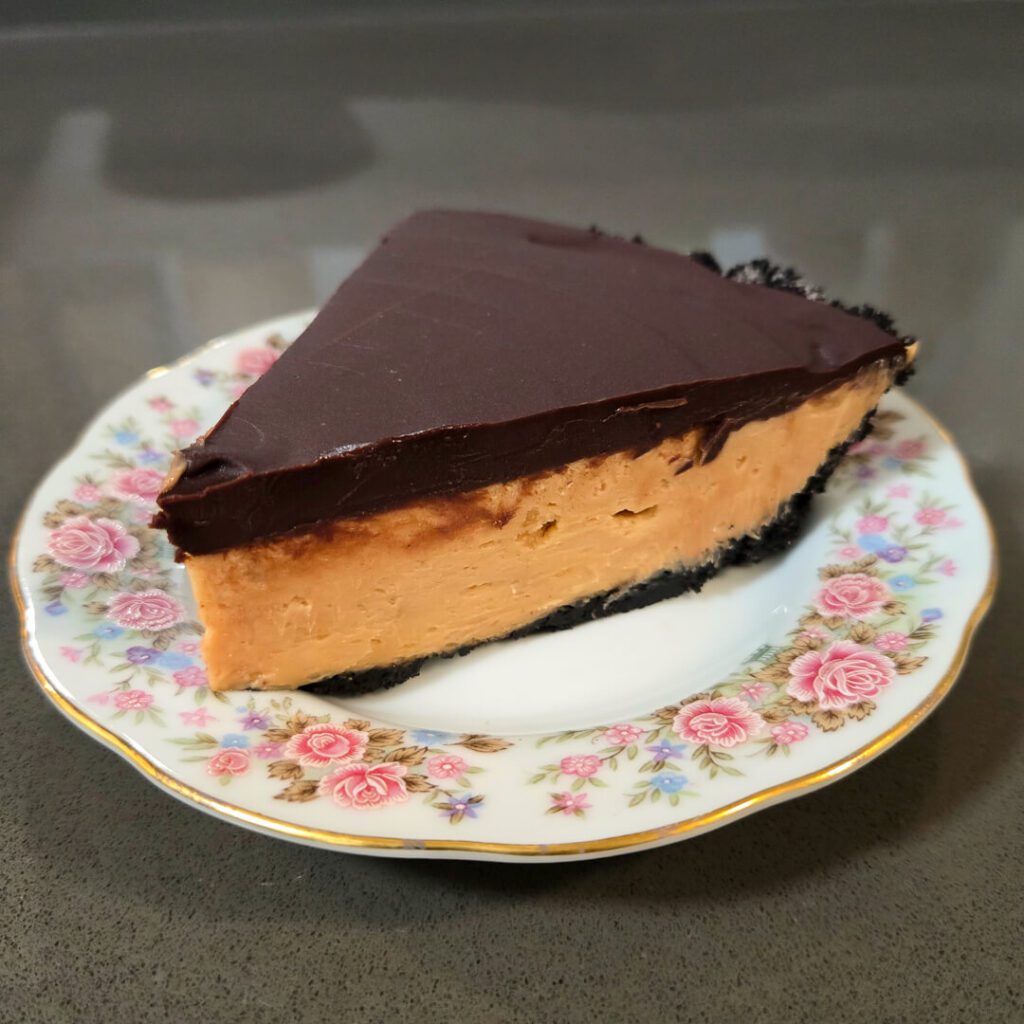
Popular Crumb Crust Recipes
While graham crackers are the classic choice, crumb crusts can be made with many different cookies and crackers. Each variation brings its own unique flavor and texture, which means you can match the crust to the filling for endless combinations. Below are some of the most popular alternatives to graham cracker crust that you can use to give their pies a distinctive twist.
- Oreo Crust: Crushed Oreo cookies create a rich, chocolatey crust that works especially well for cream pies and cheesecakes. You can leave the cookie filling in or remove it, depending on how sweet you want the base.
- Saltine Crust: Made from crushed saltine crackers, this crust has a lightly salty flavor and is best known for its use in Southern pies like Atlantic Beach Pie.
- Biscoff Cookie Crust: Spiced Biscoff cookies grind into a fragrant, caramel-like crumb that makes an excellent crust for cheesecakes and other creamy pies
- Gingersnap Crust: Crushed gingersnaps bring warm spice and crunch, making this crust a favorite for holiday pies such as eggnog or pumpkin pie.
- Pretzel Crust: Ground pretzels create a salty-sweet base that pairs beautifully with chocolate or peanut butter pies, offering a slightly savory alternative to cookie crusts for a sweet-and-salty pie.
- Vanilla Wafer Crust: Crushed vanilla wafers produce a light, buttery crust with a subtle sweetness that works well for banana pudding pie, lemon pie, and other creamy desserts.

How to Store and Bake Graham Cracker Crusts
One of the best things about graham cracker crusts is how well they can be made ahead of time. If you’re planning for a holiday meal or a busy baking weekend, you can prepare the crust in advance and have it ready when you need it.
Storing Graham Cracker Crusts
Both baked and unbaked graham cracker crusts can be stored in the freezer for up to one month. To prevent freezer burn, wrap the pie pan tightly in plastic wrap, then place it in a large freezer bag. When you’re ready to use the crust, simply let it sit at room temperature for about 15–20 minutes before filling. If the crust gets stale during storage, you can refresh it in a 350°F oven for 5–7 minutes to crisp it back up.
When to Bake (and Not to Bake) Graham Cracker Crusts
Graham cracker crusts can be used baked or unbaked regardless of the pie you’re making. If you’re using the crust unbaked, it can go straight into the refrigerator once it’s pressed into the pan. Chilling firms the butter and helps the crumbs hold together. If you prefer a crispier crust, a short bake of 5–10 minutes at 350°F adds extra crispness and helps lock the crumbs in place.
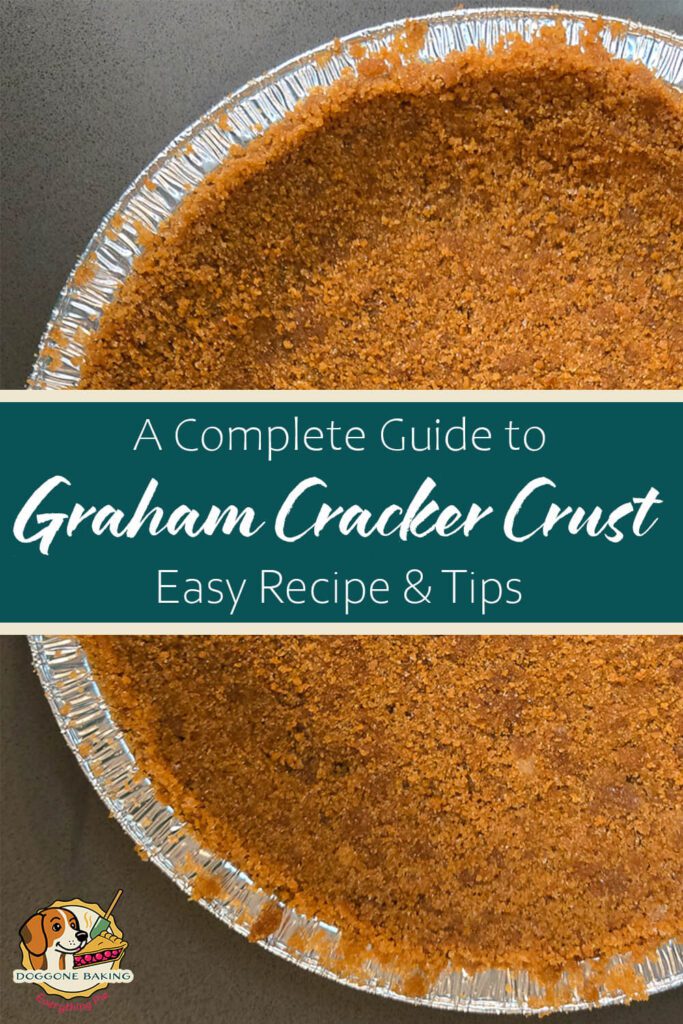
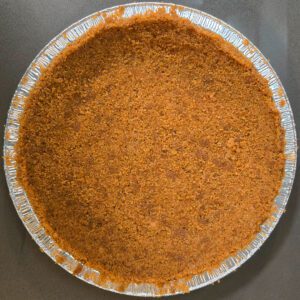
Graham Cracker Crust
Ingredients
- 1½ cups Graham Cracker Crumbs (~210g)
- ¼ cup Granulated Sugar (50g)
- ¼ cup Unsalted Butter, melted (2oz)
Instructions
- Break graham crackers into pieces and grind into fine crumbs using a food processor. Work in small batches so you don’t overfill.
- Measure out 1½ cups of crumbs and place them in a medium mixing bowl.
- Add ¼ cup melted unsalted butter and ¼ cup granulated sugar to the crumbs.
- Mix with a fork until the crumbs are evenly coated and the texture resembles wet sand.
- Press the mixture firmly into the bottom and sides of a 9-inch pie pan. Start in the center and work outward. A flat-bottomed measuring cup or glass helps pack the crumbs tightly.
- For no-bake fillings, chill the crust in the refrigerator for at least 1 hour, or pre-bake at 350°F (175℃) for 5–7 minutes if you prefer a crispier crust. For baked pies, fill the crust and bake according to your recipe, no pre-baking required.






